How to Do a Plank, Plus 3 Plank Exercises for Tight, Flat Abs
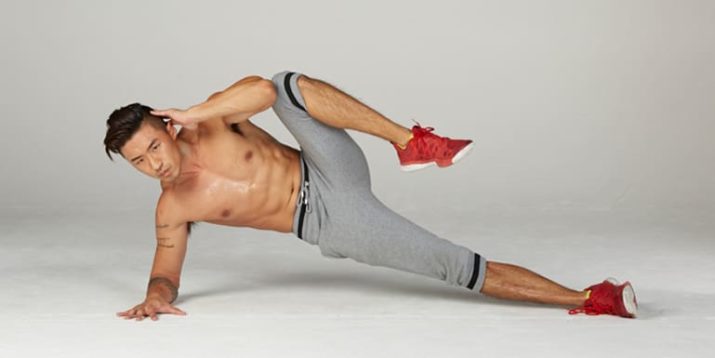
What if we told you that by doing just one move you could tighten your abs, firm up your booty, and strengthen your arms? No, it’s not too good to be true. The one move that can do it all is the plank. It’s one of the best overall core conditioners around, and unlike crunches, it keeps your spine protected in a neutral position. Plus, it’s difficult to exhaust the number of planking possibilities. “There are dozens of ways to modify the plank so you’ll never get bored,” says exercise physiologist Martica Heaner, Ph.D., author of Cross-Training for Dummies and other fitness books. Here’s a breakdown of how to do a plank properly, an explanation of plank benefits, and three of the best plank exercises to work your abs.
How to Do a Plank
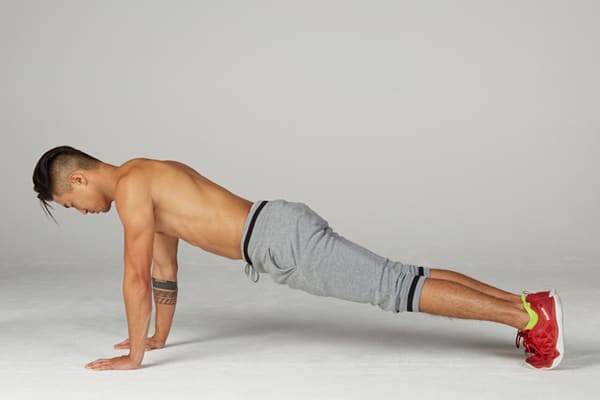
There are a few different kinds of planks, including the forearm plank, side plank, and full plank (sometimes known as a straight-arm plank). Here’s how to do a full plank with perfect form:
- Assume a push-up position: Get on all fours with your feet together and your body straight from head to heels.
- Make sure your wrists are directly beneath your shoulders.
- Squeeze your glutes and brace your core by drawing your belly button into the spine to lock your body into position. (To achieve this, it helps to imagine that someone is about to punch you in the gut.)
To do a forearm plank, assume a push-up position, but place your weight on your forearms instead of your hands, with your elbows directly beneath your shoulders. Then, follow the rest of the items on the checklist above.
Here’s a video that demonstrates how to do a plank on your forearms.
How to Do a Plank for Beginners
Never done a plank before? Don’t be intimidated. It’s easy to work your way up to doing one like a pro. First, start with either the basic full plank or forearm plank. If the full plank hurts your wrist, then opt for the forearm plank, or prop yourself up on large dumbbells or push-up bars.
It’s okay to start small. “Unless someone is used to doing full-body push-ups, it’s likely that when they first try a plank they would not be able to hold it for even 5 seconds,” Heaner says. “So for a beginner, holding it for 5 seconds, resting, then picking it up again for another 5 seconds, and so on, is a sensible approach.” She suggests adding 5 to 10 seconds to your plank every week to work your way up to holding it for a full minute. “It’s fine to do them every day since they are an endurance exercise.”
When you become comfortable holding a basic plank for 10–30 seconds, Heaner says you can progress to more advanced variations, like side planks. You can also escalate the forearm or full plank by doing a single-arm or single-leg plank, which involves turning the torso or lifting one arm or one leg (or even one arm and one leg).
Which Muscles Are Worked in a Plank?
Planks are pretty much a catchall for working different muscles. “When you do a plank, you not only engage all of the muscles in your core, but also your glutes, thighs, and shoulders — it really is a total-body exercise,” Heaner says. Yes, planks can help you score a stellar six-pack, but they’ll also strengthen the rest of your body in the process.
What Are Some Plank Benefits?
Again, the plank targets multiple muscles at once, and it targets them quite effectively, too. That means that there are tons of benefits of doing planks. Holding the static plank position extends your muscles’ time under tension, which is key to triggering muscle growth. But ultimately, planking reinforces your core’s primary job: stabilizing the spine. When you strengthen the armada of muscles that support and stabilize your spine (i.e., your core), you reduce the amount of stress placed on it. “Stability exercises like planks are the key [to protecting your back],” says Heaner. Crunches and sit-ups might do a fine job of working your abs, but planks, when done correctly, train all sides of your core, from the front to the back.
Planks also limit the amount of stress placed on the spine. “Crunches and sit-ups mobilize and bend the spine, and in doing so, they compress the discs in between the vertebrae,” Heaner says. “While some people can handle this, it can be too much stress on spinal structures for some.”
How Long Should You Hold a Plank?
In May 2016, Mao Weidong of China snagged the world record for holding a plank by doing it for 8 hours and 1 minute. But that doesn’t mean you have to come anywhere close to that time to get all the benefits of planks. According to Heaner, there is no perfect amount of time to hold a plank. Instead, it has to do with building up your muscular endurance.
“Working up to being able to hold a plank for 1 to 3 minutes is a great (and difficult) goal,” she says, adding that it’s also worth your time to work on performing variations of the plank with different arm and leg movements. “This shifts your body weight and throws the plank off balance for increased challenges to the core muscles.”
3 Plank Variations to Try in Your Next Abs Workout
Now that you know the basics of doing a plank, it’s time to try our plank challenge! Here are three plank exercises that will chisel your core and challenge your entire body.
Exercise 1: Plank Cross Tap
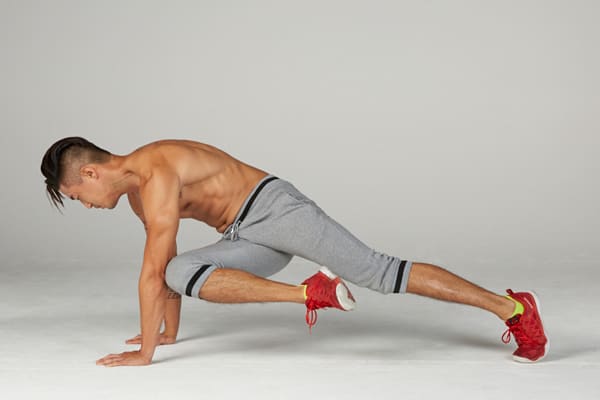
- Start in a full plank with your arms straight, hands in line with (but slightly wider than) your shoulders, feet together, and body straight from head to heels.
- Keeping your back flat, lift your right foot and bring your right knee to your left elbow.
- Return to the starting position. Do equal reps on both sides.
Exercise 2: Forearm Side Plank with Crunch
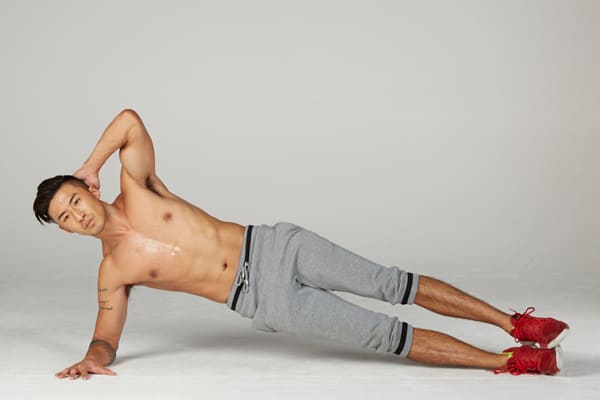
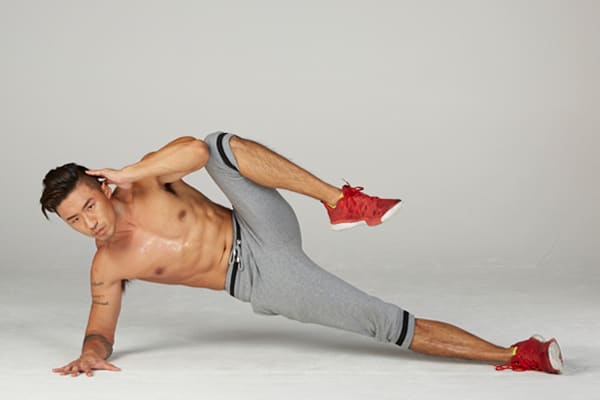
- Lie on your right side propped up on your right elbow and forearm, shoulders stacked over your elbow, legs stacked on top of each other, and place your left fingertips behind your left ear.
- Raise your hips so that your body forms a straight line from head to heels. This is the starting position.
- Keeping your core braced, crunch your abs and bring your left elbow and knee together.
- Return to the starting position. Do equal reps on both sides.
Exercise 3: Full Side Plank with Rotation
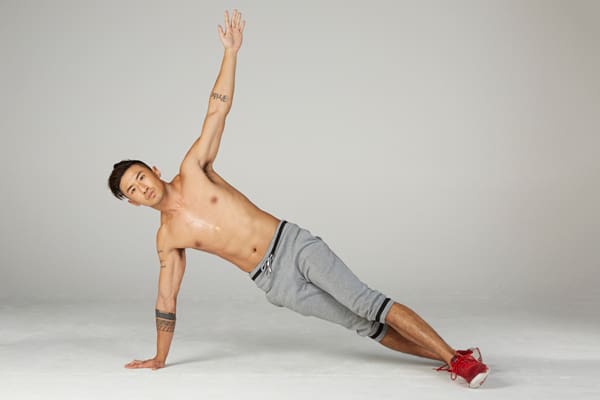
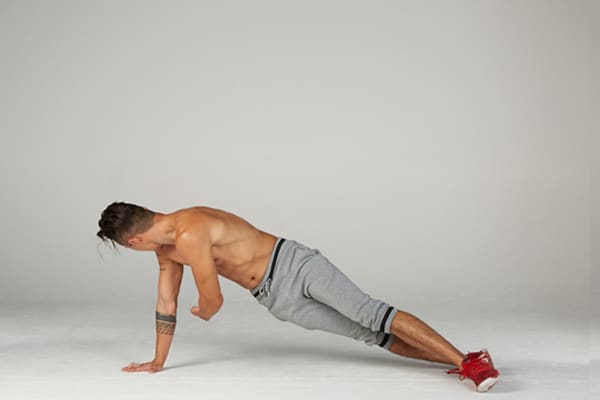
- Assume a full plank position with your arms straight and in line with (but slightly wider than) your shoulders.
- Raise your right arm toward the ceiling, so that your body forms a sideways “T.” This is the starting position.
- Reach under and behind your torso with your right hand, rotating from your upper back (not your lower back).
- Return to the starting position. Do equal reps on both sides.
Want even more ab-sculpting plank exercises? Just head over to Beachbody On Demand! Here are a few programs where you can find some killer core challenges: Tony Horton’s 10-Minute Abs workout, The Master’s Hammer and Chisel 10 Minute Ab Chisel, and Jericho McMatthew’s Beachbody On Demand exclusive workout, Half & Half. Happy planking!

